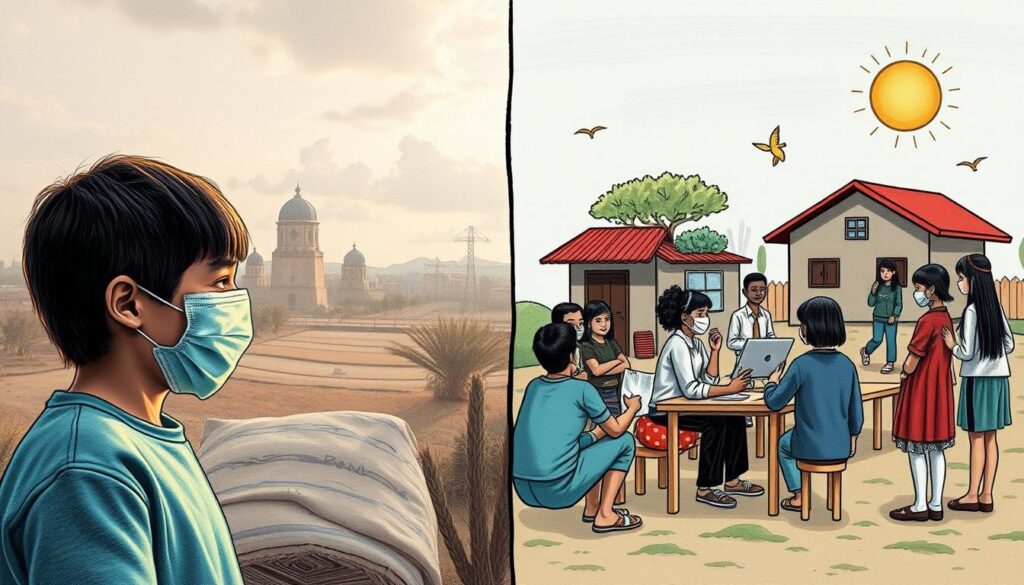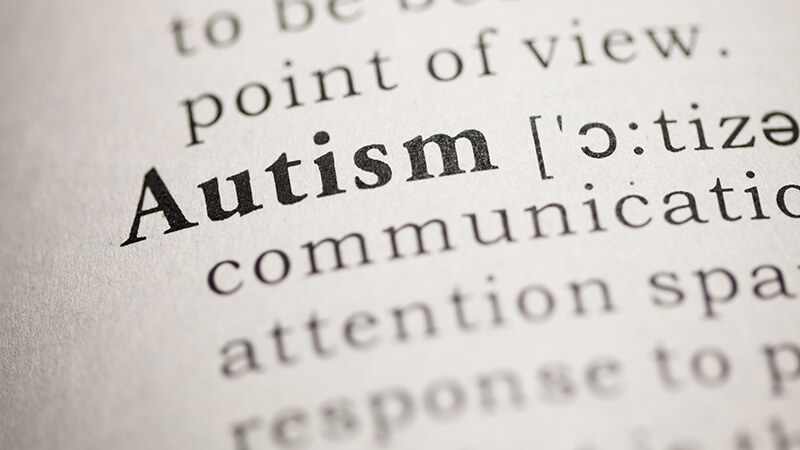Youth exiting foster care often lag educationally behind peers. Their financial stability and job prospects are much weaker after they leave the system. This shows the need for strong transitional living and aftercare programs. The Family and Youth Services Bureau has been supporting these programs since 1981. But, how can we tell if they’re working?
When looking into independent living programs for youth, it’s crucial to know what key aspects to consider. These programs combine housing support with services to help young adults become self-sufficient. Thus, evaluating the effectiveness of transitional living programs is essential. We want these programs to be more than just available—they must truly help.
Key Takeaways
- Understand the educational and financial challenges faced by youth exiting foster care.
- Recognize the enduring shortfall in employment opportunities for these young adults.
- Learn how Transitional Living Programs supported by the Family and Youth Services Bureau can offer a remedy to this issue.
- Assess the overarching services provided by youth aftercare programs for long-term independence.
- Appreciate the importance of program evaluation in enhancing the efficacy of youth transitional housing initiatives.
Introduction to Transitional Living Programs for Youth
Exploring transitional living programs is key when tackling youth homelessness. These programs support young adults moving towards living on their own. They offer the help needed during this tough change.
The Role of the Family and Youth Services Bureau in Youth Transitional Housing
The Family and Youth Services Bureau (FYSB) backs these youth programs greatly. It was set up by the 1974 Runaway and Homeless Youth Act. The FYSB focuses on helping homeless youth find stability and safety.
It makes sure programs teach important life skills like handling money, eating right, solving conflicts, and getting jobs. This aims not just to give temporary places to stay, but also to ready young adults for a successful and independent life.
Understanding the Transitional Living Program (TLP) Initiative
The Transitional Living Program (TLP) helps 16 to 21-year-olds without stable homes. It does more than offer a roof over their heads. The program includes health care, communication skills, and support to make them self-reliant and healthy.
Studies show these programs really help youth find stable homes and jobs. For example, 73% find long-term housing and most get jobs or further their education. These programs are especially important for BIPOC youth, helping them into stable jobs and homes.
There’s growing support for these programs, with funding from groups like HUD. New laws, like House Bill 1912, make these initiatives even stronger. They are more ready than ever to meet the needs of at-risk youth.
Looking into transitional living programs can bridge the gap to a secure and independent adult life. They lay the groundwork for success.
Key Outcomes of Youth Transitional Housing Programs
Transitional living programs (TLPs) make a big difference in young people’s lives. Studies on youth housing outcomes prove their worth. For example, 78% of those in TLPs find permanent housing after they leave. This shows how well these programs help create stable lives.
The rate of employment for these youths goes up during the program. It jumps from 52% to 62%. This increase shows TLPs help young people get better jobs. They end up making about $2,258 every three months. Even though this is close to the poverty line, it’s a step towards making their own money.
- Only 8% end up without a home right after their program. This shows the long-lasting impact of TLPs.
- Despite hard times like the pandemic, 28% keep going to college. This shows they’re strong, even when things get tough.
But there are still hurdles to clear. Educational success is harder to come by for these young people. There’s a higher chance homeless youth will drop out of school – 87% don’t finish high school. This fact highlights the need for more educational help within TLPs.
Places like the Carolina Youth Development Center stand out for their help. They have over 200 years of experience combined. With programs at the Callen-Lacey Center for Children and NuHouse, they change lives. They offer crucial services, such as tutoring and help with college applications. This way, they help youth succeed academically and find stable housing.
To wrap things up, TLPs are very helpful. They improve housing and job situations for young people. But, they still need to work on helping with school success for those coming from homelessness. By keeping up and enhancing these programs, we can help more young adults become successful and independent.
Transitional Living Programs for Youth: Determining Program Benefits
When looking at transitional living programs for youth, it’s important to know what benefits they offer. These programs do more than just provide a place to live. They help young people work towards a future where they can stand on their own. Let’s explore what makes these programs so effective and beneficial.
Evaluating Long-Term Housing Stability
Stable housing is key for young people transitioning to adulthood. Transitional living programs offer this stability. They help youth build a solid base for their future.
One standout feature is the Extended Foster Care option. It helps those turning 18 in foster care extend their stay, offering a smoother move to being independent. Plus, they offer up to $500 a month for room and board. This helps cover rent, utilities, and food costs.
Assessing Education and Employment Support Services
Transitional living programs also boost education and job success. They teach important skills for work and life. Programs like Preparation for Adult Living (PAL) cover job readiness and managing money.
They ensure youth have access to vital personal documents and resources. Things like credit reports and important papers help with personal and job growth.

Navigating Challenges: Transitional Living Programs During and Post-Pandemic
The COVID-19 pandemic hit transitional living programs hard. It brought challenges and deeply affected vulnerable youth’s well-being. It’s important to understand and adapt to continue supporting them.

Pandemic effects on youth programs were wide-ranging. They hit the core stability that programs aim to create. Youth faced educational and financial challenges.
About fourteen million college students, including those in transit housing, faced campus shut-downs. This disrupted their education and future plans. Other youth, like Christine, struggled to find stable, safe housing due to frequent moves.
With programs closing and shifting online, accessing services became harder. This made consistent support difficult. COVID-19 impact on youth housing made things worse. It increased mental health issues and financial instability for many.
In response, transitional living programs quickly made changes. These transitional living programs challenges needed swift action:
- They boosted online services for education, counseling, and support.
- They put in safety measures to protect staff and residents from the virus.
- They found extra funds to keep programs running without interruptions.
- They worked more with local health agencies for COVID-19 testing and vaccines for at-risk youth.
As the pandemic changes, these urgent changes show promising ways to keep transitional living programs going. Staying flexible and innovative is key to helping youth find stability and security in tough times.
The Importance of Program Evaluation and Outcome Tracking
For those committed to the success of youth transition programs, knowing how to evaluate effectively is crucial. The growth in youth development programs demands stronger evaluation and tracking. This ensures the programs really help the youth they aim to serve.
Understanding the Metrics for Success
Youth aftercare programs are complex and success is multi-faceted. It’s about stable housing, finding jobs, and continuing education. Measuring these areas lets programs improve. Tools like studies and data tracking help keep track of progress.
- Physical and psychological safety ensures a stabilizing presence in young lives.
- Supportive relationships foster networks that can provide both emotional and professional guidance.
- Opportunities for skill-building are crucial in promoting self-sufficiency and confidence.
- Integration of family, school, and community efforts ensures a holistic approach to youth development.
Building an Evidence Base through Evaluation Studies
Evaluation studies refine youth programs and build a key evidence base. This evidence is vital for influencing policy and funding. For example, Pay for Success (PFS) projects need strong evidence to work. These projects show why thorough evaluations are important, as outcomes drive funding.
- Establish clear, operationally defined outcomes for measurement.
- Use rigorous methodologies to ensure the reliability of the data gathered.
- Engage stakeholders, including youth, in the evaluation process to ensure all perspectives are included, enhancing the relevance and utilization of findings.
By following these methods, stakeholders can improve the support for youth. They help as young people move into adulthood.
Conclusion
Youth transitional housing and programs are incredibly important. They offer a vital bridge to stability for young adults. This is especially true for those leaving foster care or facing homelessness.
Let’s look at some data showing their success:
- 73% of participants found stable housing after leaving the programs.
- 69% were working or in school, showing these programs help with job and education opportunities.
- A study of 564 young people in 15 U.S. cities found big improvements in housing, jobs, and school after the programs.
- The longer someone stayed in the program, the better they did in finding a stable place to live and work.
- BIPOC youths did better in finding homes, though they were less likely to enroll in education.
The Youth Villages’ program, now called YVLifeSet, shows the positive effects of good support. This program helped improve housing and earnings for many over two years. It proves structured help really benefits those in need.
Supporting these youth programs can lead to big changes. It helps young adults succeed. By giving funding and support, we can make a huge difference in many lives. This also helps our community grow stronger and healthier.
How New Direction For Young Adults Can Help You
Transitioning into adulthood can be challenging, but New Direction For Young Adults is here to support you every step of the way. Through personalized plans and Direction Therapy, they help you build the skills you need for independent living. Whether it’s managing school, jobs, or finances, New Direction ensures you have the tools to succeed and reach your goals.
With weekly counseling, job skills training, and support for social development, New Direction prepares you for a stable, self-sufficient future. Their programs focus on helping you grow academically, professionally, and personally, providing the guidance and encouragement you need to build a rewarding life and integrate into your community.



